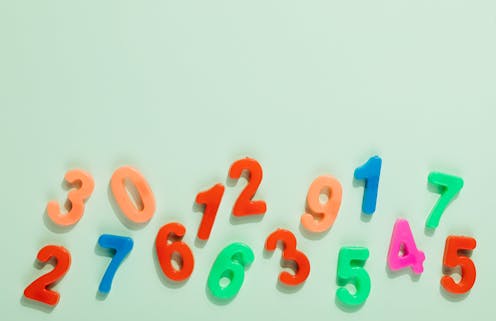What are ‘multiplication facts’? Why are they essential to your child’s success in maths?
- Written by Bronwyn Reid O'Connor, Lecturer in Mathematics Education, University of Sydney

One of the essential skills students need to master in primary school mathematics are “multiplication facts”.
What are they? What are they so important? And how can you help your child master them?
What are multiplication facts?
Multiplication facts typically describe the answers to multiplication sums up to 10x10. Sums up to 10x10 are called “facts” as it is expected they can be easily and quickly recalled. You may recall learning multiplication facts in school from a list of times tables.
The shift from “times tables” to “multiplication facts” is not just about language. It stems from teachers wanting children to see how multiplication facts can be used to solve a variety of problems beyond the finite times table format.
For example, if you learned your times tables in school (which typically went up to 12x12 and no further), you might be stumped by being asked to solve 15x8 off the top of your head. In contrast, we hope today’s students can use their multiplication facts knowledge to quickly see how 15x8 is equivalent to 10x8 plus 5x8.
The shift in terminology also means we are encouraging students to think about the connections between facts. For example, when presented only in separate tables, it is tricky to see how 4x3 and 3x4 are directly connected.
Maths education has changed
In a previous piece, we talked about how mathematics education has changed[1] over the past 30 years.
In today’s mathematics classrooms, teachers still focus[2] on developing students’ mathematical accuracy and fast recall of essential facts, including multiplication facts.
But we also focus on developing essential problem-solving skills. This helps students form connections between concepts, and learn how to reason through a variety of real-world mathematical tasks.
Read more: 'Why would they change maths?' How your child's maths education might be very different from yours[3]
Why are multiplication facts so important?
By the end of primary school, it is expected students will know multiplication facts up to 10x10 and can recall the related division fact (for example, 10x9=90, therefore 90÷10=9).
Learning multiplication facts is also essential for developing “multiplicative thinking”. This is an understanding of the relationships between quantities, and is something we need to know how to do on a daily basis.
When we are deciding whether it is better to purchase a 100g product for $3 or a 200g product for $4.50, we use multiplicative thinking to consider that 100g for $3 is equivalent to 200g for $6 – not the best deal!
Multiplicative thinking is needed in nearly all maths topics in high school and beyond. It is used in many topics across algebra, geometry, statistics and probability.
This kind of thinking is profoundly important. Research shows[4] students who are more proficient in multiplicative thinking perform significantly better in mathematics overall.
In 2001, an extensive RMIT study[5] found there can be as much as a seven-year difference in student ability within one mathematics class due to differences in students’ ability to access multiplicative thinking.
These findings have been confirmed in more recent studies, including a 2021 paper[6].
So, supporting your child to develop their confidence and proficiency with multiplication is key to their success in high school mathematics. How can you help?
Below are three research-based[7] tips to help support children from Year 2 and beyond to learn their multiplication facts.
1. Discuss strategies
One way to help your child’s confidence is to discuss strategies for when they encounter new multiplication facts.
Prompt them to think of facts they already and how they can be used for the new fact.
For example, once your child has mastered the x2 multiplication facts, you can discuss how 3x6 (3 sixes) can be calculated by doubling 6 (2x6) and adding one more 6. We’ve now realised that x3 facts are just x2 facts “and one more”!

















